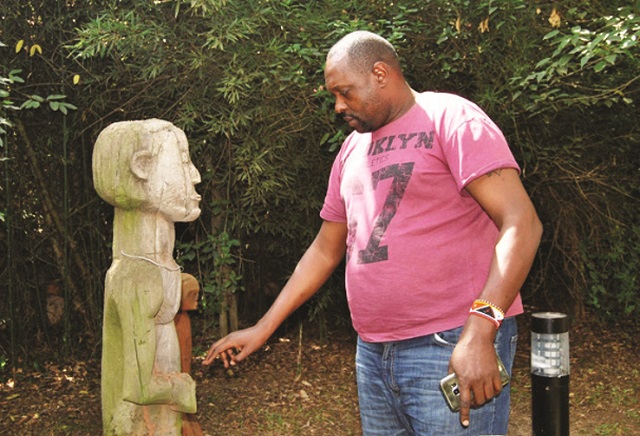
Joe Nickson sells tribal art, which is the art of indigenous people and usually has cultural value. He has been in the business for more than 25 years, through his IntoAfrica Gallery at Nakumatt Oasis Mall. He also owns a private gallery at his residence. Dominic Muwanguzi talked to him about his business and passion. Below are the excerpts from the interview.
What is good tribal art?
Good art is about aesthetics. What is visually attractive to someone buying art and the message behind it. In the context of tribal art, people are usually looking for something unusual or bizarre in terms of style and shape. They are also interested in that story behind the artifact. What was the purpose of the object to the tribe? Was it used for ritual purposes like child-birth, death and spiritual initiation or it was a functional object like a king’s throne? This attracts the buyer to buy and in their thinking this is good art.
How do you acquire these artifacts?
I have been in this business for long, so I have built a good network of people who sell to me. Usually these come from the Congo and Tanzania. Sometimes I do travel and along the way, I collect. For example, this Masaai leather shield (he draws it from the closet and shows it to me) I got it from the Masaai Mara Park a few months ago.
Which has been your biggest collection so far?
I think by biggest you mean most expensive. Unfortunately, I do not have that “biggest collection”. What I usually buy from my suppliers- even if it is so expensive- I always find someone, regardless of time, who can offer me an attractive price that I cannot refuse.
Who is buying from you?
In my initial years of starting this business, I travelled a lot overseas. I established contacts in Europe and America and these are still buying from me. Luckily, these people have also linked me to other clients and now I have buyers from all over the world. I could be seated here, and I receive a call from someone from New York who has seen something they want to buy on my website. Locally, I do not have that many clients.
How are you able to identify an original and duplicate piece?
Unfortunately, most of the tribal art now in circulation is not original. What we have are what some critics refer to as “replicas” because most of the originals were taken away by the white man during colonisation. Others have been destroyed by tribal conflicts and war, and a constant change in weather patterns. Interestingly however, there are people out there who have been handed the skills of wood-carving from generation to generation and have mastered the craft of reproducing most of these items.
Tribal art comes from a background of oral literature. How easy or hard is it to archive?
Documentation of tribal art has largely been done by curators and art historians who are trained to handle such ancient-old information on these objects. A lot of well- researched literature about the art form is presently available on-line and in hardcopy.
What ideas do you have in integrating tribal art into everyday spaces?
Tribal artifacts can be incorporated in the home or office space and create a unique ambience. I have tribal masks, thrones and shields in my living room, kitchen and office. However, for many people there is a stigma about including such art in their spaces because they think it is devilish or satanic. This prejudice is facilitated by the missionary preaching that anything rooted in African traditional society is ungodly.
What inspired you to go into tribal art?
After high school, in the early 1990s, I was working at this particular gallery in Bugolobi and there were these people bringing in art from the Congo (Democratic Republic of Congo) which incidentally was at war at the time. This art was new to me because through-out my time in school, I had never seen or heard about it. I was amused by this new discovery. I later learnt that the art had a good market after a colleague made a huge profit off a certain grave sculpture from Sudan. Later, I saw more artifacts being bought expensively by our clients. I thought it was a good business and from my personal savings, I started to deal in the art, but I think I was more driven by the passion and love for this new discovery.

****
 The Independent Uganda: You get the Truth we Pay the Price
The Independent Uganda: You get the Truth we Pay the Price


